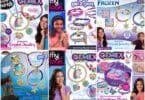Did you know that countless children’s toys have been recalled in recent months due to lead poisoning hazards? This is a serious issue that can have lasting effects on your child’s growth and development.
Exposure to too much lead can lead to problems such as behavioral issues, hearing difficulties, and learning disabilities. It can even stunt their growth. That’s why parents must research where their toys are made and support products that use non-toxic paints and finishes.
You’ll be glad to know that there are reputable European and North American companies that produce safe and creative toys for your child. While they may come at a slightly higher price point, the quality and craftsmanship make it a worthwhile investment.
It’s alarming to learn that a staggering 80% of toys sold worldwide are made in China. ConsumerAffairs.com’s investigation also revealed that a whopping 96% of toy recalls during the first part of this year were from China. This is a significant number that cannot be ignored.
If you have concerns about your child’s risk of lead poisoning, consult with your doctor and request a blood test. This test can determine if their lead levels are too high and indicate the need for further action.
Children with chronic lead poisoning may experience lower intelligence and smaller size compared to their unaffected peers. They may also show behavioral problems like irritability, hyperactivity, learning difficulties, lethargy, and loss of appetite.
If you haven’t already done so, it’s crucial to go through your child’s toybox and remove any toys on the recall list. You can easily search my posts for lead poisoning-related recalls. With so many cases, it’s a good idea to review them thoroughly to ensure no toys are missed.
What you can do to protect your children
- Avoid purchasing toys from vending machines. In 2004, 150 million pieces of children’s jewelry in the U.S. were recalled from vending machines.
- Avoid toys that have small parts that could be swallowed, especially if the parts are metal or metallic.
- Avoid glossy fake pearls that may be coloured with lead paint.
- Test suspicious jewelry. LeadCheck swabs are available at most local hardware stores and can be used to test products you purchase for your child. Swabs turn pink when lead is detected. You can also order test kits online at www.leadcheck.com.
- Get your child tested, as this is the only sure way to know if your child has been exposed.
How can you tell if your child’s toys contain lead?
While it’s difficult to tell if a product contains lead just by looking, here are a few tips that may help you identify it:
- Dull, grey-looking metal.
- Pieces that seem heavy for their size.
- If you rub a piece of jewelry against a sheet of paper and it leaves a grey line, it’s probably made of lead.
- Bright colours, especially orange and red.
- Soft plastics, as lead is used as a stabilizer to help keep the plastic soft.
You can test for lead in toys and jewelry on your own. There are several lead testing kits available, mainly through paint stores, large hardware store chains, and online.
This problem is both scary and maddening at the same time. One would think that the government would protect our children by not allowing these products to be sold in the first place, but I guess that is asking too much.
Health Canada no longer tests toys or jewelry suspected of lead contamination, but encourages consumers to contact the National Capital Region Consumer Product Safety Bureau if they have concerns.






